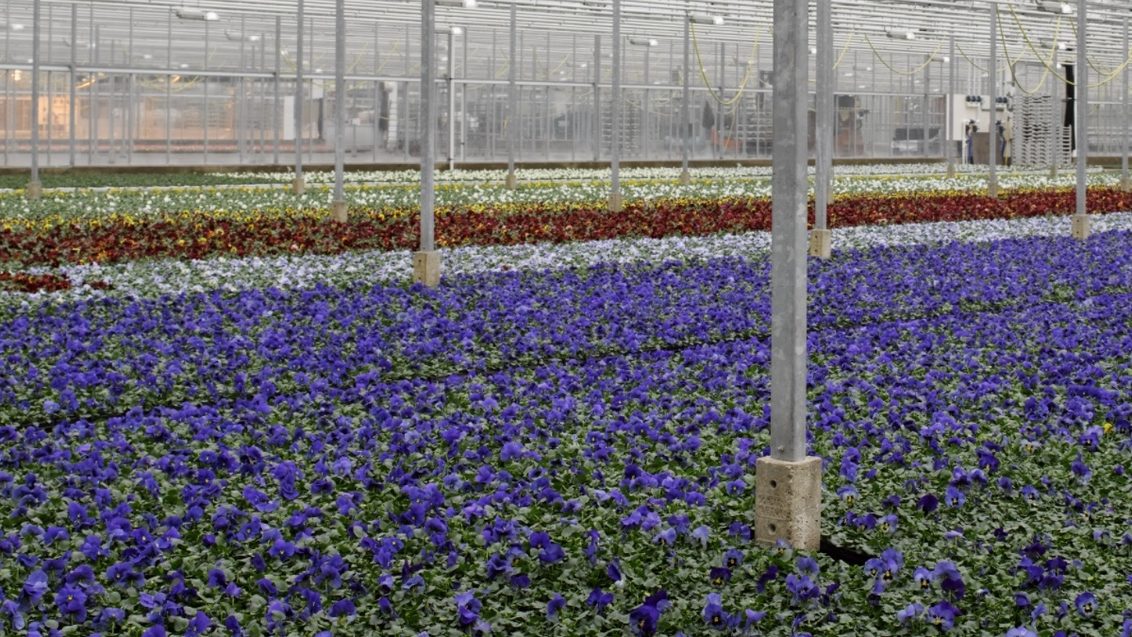How much in the tank; how much on the crop?
What are the different ways to specify an application rate?
How do I interpret application rate information for my crop?
Making an application at the correct rate is crucial both to achieving the optimum effects from the plant protection product you’re applying and to protecting yourself and the environment.
Sounds easy enough when you say it. But as we all know, it’s no mean feat to achieve in practice on an ornamentals nursery with all our great diversity of crop shapes, sizes and growth stages; less than ideal equipment in many cases; and various irrigation infrastructure and greenhouse stanchions getting in the way. Farmers spraying flat arable fields have it easy by comparison.
When you look at the product label, you can find rates expressed in two different ways: a dilution rate for the amount of product you should mix with water in your spray tank; and an application volume rate, which puts a certain amount of that spray mixture – and hence product – onto the crop.
They both need to be taken into account when calibrating your equipment and planning each spraying operation, so it’s important to understand the different aspects of the job they are there to help you with.
Dilution
The dilution rate determines – for any given nozzle recommendation – how much of the product’s active ingredient is present in each drop of water in the spray solution. That can be particularly important if, for example, you’re using a contact insecticide, because you’re relying on the drops that land on or near the target pest carrying enough product to have an effect.
Applying a fungicide, insecticide or herbicide at below the recommended dilution risks poor control and could compromise resistance management.
In the case of growth regulators, the effect on the crop will vary with the dilution rate.
On the label for Bonzi, for example, you’ll find a range of dilution rates with a permitted maximum of 25ml of product per litre of water. Only one treatment per crop is authorised at that rate. However, the label states that you can make up to four applications, at least seven days apart, if you use a dose rate below 10ml per litre; and up to 10 applications, 10 days apart, for any dose lower than 4ml per litre. The minimum dilution rate permitted by the label is 0.3ml per litre.
The dilution rate you need when applying Bonzi will depend on the crop and the strength of effect you’re looking for – the label recommends 1.25ml per litre for bedding plants or poinsettia; 10ml per litre for pot miniature roses and the maximum 25ml for azalea as a forced pot plant.
The recommended spray volume rate for Bonzi is 2 litres of mixed spray solution per 10 sq m of crop or ‘sufficient to give thorough coverage while avoiding run-off’ irrespective of dilution rate. So you can see that with Bonzi it’s your control of the dilution rate that determines the effect you’ll get on the crop.

Volume
While the dilution rate is all about how much product you apply per droplet, the volume rate is about putting enough drops on the crop for adequate coverage, though if you have been following these blogs and our ‘Art of application’ series you’ll know a range of other factors can affect this too, such as droplet size, application pressure and accurate calibration.
Volume rates are usually expressed as a number of litres of product per hectare. For many products used on ornamentals, but based on active ingredients initially developed for field crops, a volume rate is what you will find. This makes perfect sense on a wheat field or even a golf course but is less easy to put into practice on a crop of choisya liners or a bench of winter pansies.
Some product labels or EAMUs will also state a minimum spray application volume – the EAMU for using Amistar on ornamentals for example specifies 200 litres per ha – to ensure adequate coverage. In practice, with most sprayer types that ornamentals nurseries use you’ll be applying more than that. Let’s face it, part of the art of spraying is tailoring the water volume to the crop and the pest or disease targets in question, and with a hand-held sprayer you’re likely to be aiming to get just enough spray onto the foliage to reach, but not exceed, the point at which it starts to run off.
As we’ve seen in previous blogs, a good adjuvant can pay dividends here, helping to spread the spray evenly on the leaf well before you reach run-off point.
In practice you could be spraying at rates ranging from 250 to 300 litres per ha on something like newly potted cuttings to 1,000 or even 1,500 litres per ha on a finished crop in 3-litre pots.
But for best results it pays to keep volume rates as low as possible while achieving adequate coverage.
In a trial we ran recently on a UK nursery stock crop, we found reducing the application volume from 1,000 to 500 litres per ha actually increased the total amount of product deposited on leaves and stems. Of course, we still have to get the correct amount of the product itself onto the crop. So, if a fungicide is to be applied at, say, 3 litres per ha and you’re going to be spraying 1,000 sq m, you put 300ml of the product in the tank, whether you’re spraying at 1,000 litres or 500 litres per ha.
Visit our Art of Application pages, and our earlier blogs on calibration, for more advice.
Go back to all of our horticulture advice blogs here.
